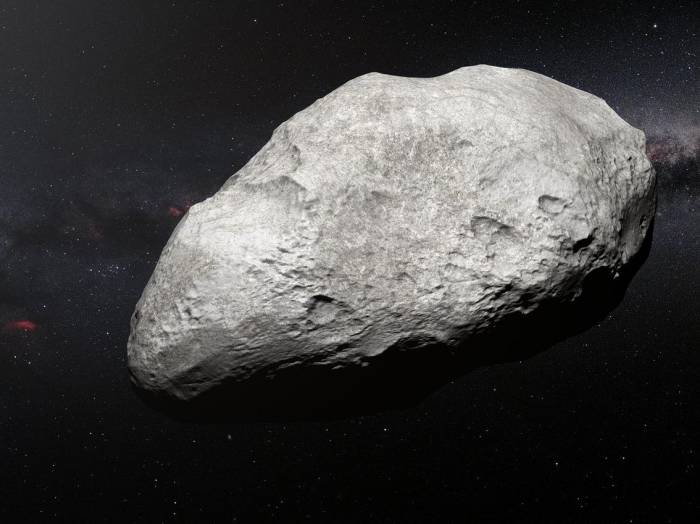The first of its kind to be found so far away, 2004 EW95 is a carbon-rich asteroid that currently resides in the Kuiper Belt, a cold region beyond the orbit of Neptune.
Astronomers suspect the 300km-long object was formed in the asteroid belt between Mars and Jupiter before being ejected into the outer reaches of the solar system.
While performing routine observations using the Hubble Space Telescope, Queen’s University Belfast astronomer Dr Wesley Fraser noticed something unusual about one of the distant asteroids he was monitoring.
Its “reflectance spectrum” – the pattern of light reflecting from it – marked it out from neighbouring bodies.
“The reflectance spectrum of 2004 EW95 was clearly distinct from the other observed outer solar system objects,” said Dr Tom Seccull, another Queen’s University Belfast researcher and lead author of the study describing the new asteroid.
“It looked enough of a weirdo for us to take a closer look.”
Measurements taken using the European Southern Observatory’s (ESO) Very Large Telescope allowed the team to determine it was formed from carbon, suggesting it originated in the inner solar system.
This idea was confirmed by the presence of minerals called ferric oxides and phyllosilicates, which had never been confirmed before in an asteroid from the Kuiper Belt and are another indicator that it first emerged closer to the Sun.
These results were published in the journal The Astrophysical Journal Letters.
Despite its distant location, the scientists think understanding more about 2004 EW95 will help them understand the turbulent early days of our solar system.
While it is difficult to determine exactly what went on when the planets as we know them today were forming and taking their current positions, scientists have produced theoretical models to understand this period.
As gas giants such as Jupiter and Saturn formed, they are thought to have migrated through the solar system, causing chaos as they flung small rocky bodies like 2004 EW95 from their places of origin into the solar system’s outer regions.
“Given 2004 EW95’s present-day abode in the icy outer reaches of the solar system, this implies that it has been flung out into its present orbit by a migratory planet in the early days of the solar system,” said Dr Seccull.
If this is the case, then astronomers should expect to find more 2004 EW95-like bodies in the Kuiper Belt, but so far it is the only known example.
“While there have been previous reports of other ‘atypical’ Kuiper Belt Object spectra, none were confirmed to this level of quality,” explained Dr Olivier Hainaut, an ESO astronomer who was not involved in the study.
“The discovery of a carbonaceous asteroid in the Kuiper Belt is a key verification of one of the fundamental predictions of dynamical models of the early solar system.”
The lack of fellow asteroids from the inner solar system does not mean 2004 EW95 is alone – it simply exemplifies the difficulty in observing objects that are so far away, even with the very best technology available.
“It’s like observing a giant mountain of coal against the pitch black canvas of the night sky,” said Professor Thomas Puzia from the Pontificia Universidad Catolica de Chile, who co-authored the study.
“Not only is 2004 EW95 moving, it’s also very faint,” added Dr Seccull.
“We had to use a pretty advanced data processing technique to get as much out of the data as possible.”
More about: science
















































